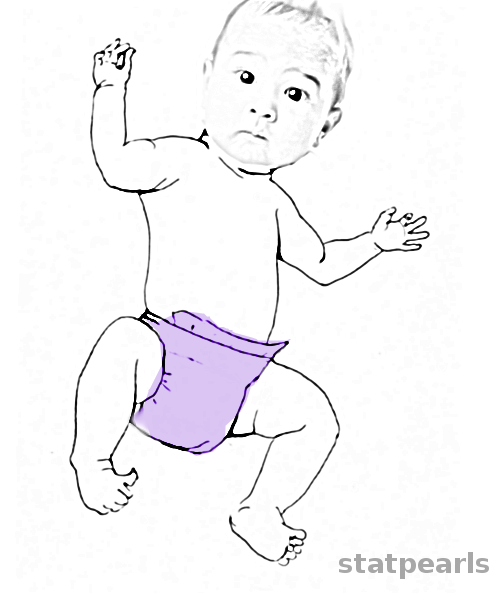Definition/Introduction
The Moro reflex is a normal primitive, infantile reflex. The Moro reflex is an involuntary protective motor response against abrupt disruption of body balance or extremely sudden stimulation.[1] Ernst Moro first described the Moro reflex in 1918. It can be seen as early as 25 weeks postconceptional age and usually is present by 30 weeks postconceptional age.[2] The reflex is present in full-term infants and begins to disappear by 12 weeks with complete disappearance by six months.[3]
The reflex is elicited by pulling up on the infant's arms while in a supine position and letting go of the arms causing the sensation of falling.[1] Production of the reflex is by the suddenness of the stimuli and not the distance of the drop. There is no need to lift the infant's head off of the bed to elicit this reflex. The normal Moro reflex starts with the abduction of the upper extremities and extension of the arms. The fingers extend, and there is a slight extension of the neck and spine. After this initial phase, the arms adduct and the hands come to the front of the body before returning to the infant's side.[3]

